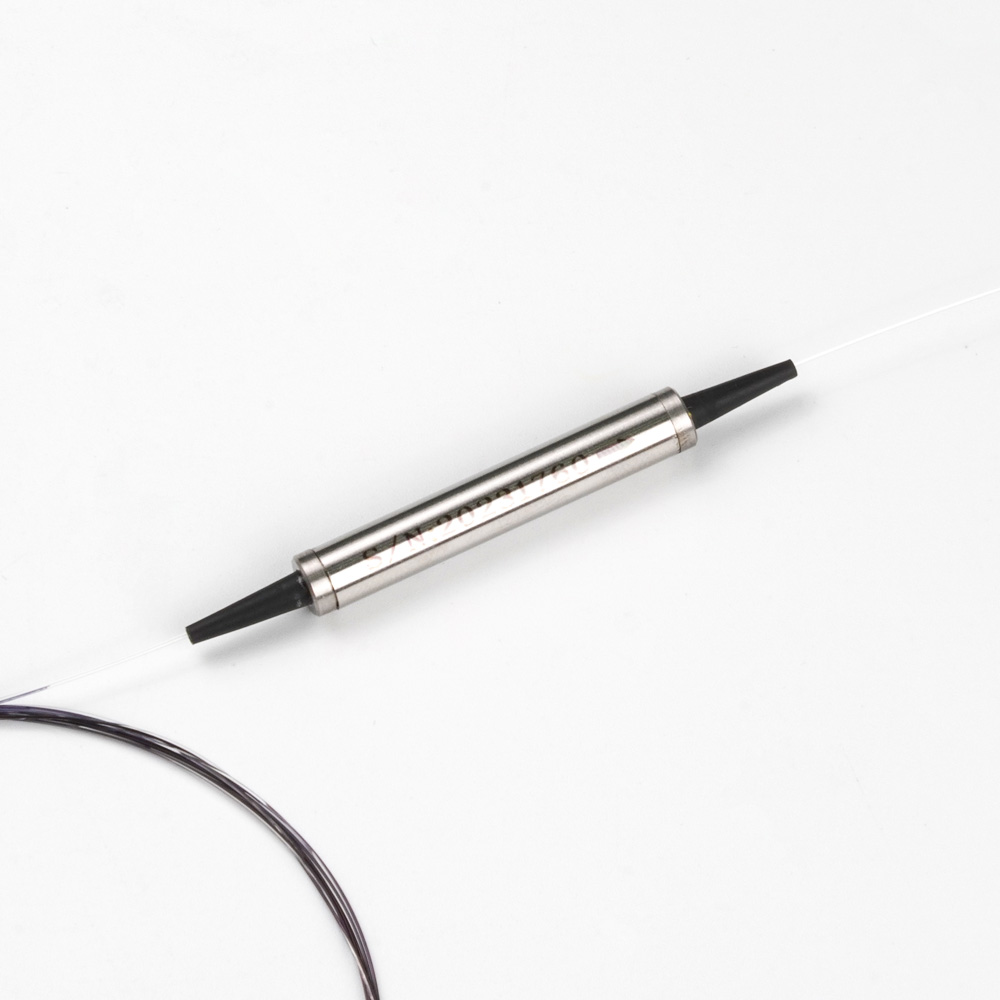1550nm Mini Single Mode Faraday Rotator Mirror 300mW FRM
Low Insertion Loss
High Return Loss
High Reliability
High Stability
Applications:
Fiber Optic lnstruments
Fiber Sensors
Optical FiberLaser
Coherent Detecting
Product Development
| Availability: | |
|---|---|
| Quantity: | |
| PDF Export | |











Product Description
| Parameter | Spec | Unit | ||
| Center Wavelength | 1550,1480,1310 | nm | ||
| Operating Wavelength Bandwidth | ±30 | nm | ||
| Max.Insertion Loss | 0.6 | dB | ||
| FaradayRotation Angle for CWL | 45 | deg | ||
| Max.Rotation Angle Tolerance for CWL | ±3 | deg | ||
| Max.Polarization Mode Dispersion | 0.05 | ps | ||
| Max.Power Handling(CW) | 300 | mW | ||
| Max.Tensile Load | 5 | N | ||
| Fiber Type | SMF-28e | / | ||
| Operating Temperature | -5~+70 | ℃ | ||
| Storage Temperature | -40~+85 | ℃ | ||
Key Features of the 1550nm Mini Single Mode Faraday Rotator Mirror
1. Low Insertion Loss
The 1550nm Mini Single Mode Faraday Rotator Mirror features a maximum insertion loss of just 0.6 dB, ensuring minimal signal attenuation. This low insertion loss is crucial for maintaining the integrity of your optical signals, particularly in high-performance systems that require precise data transmission without any degradation.
2. High Return Loss
With a high return loss, this Faraday rotator mirror minimizes signal reflections, which is critical for maintaining signal quality and reducing noise. The reduced reflections improve the stability of the optical system, making it ideal for applications such as fiber optic instrumentation and coherent detecting.
3. High Reliability and Stability
Engineered for high reliability and stability, the 1550nm Mini Single Mode Faraday Rotator Mirror performs consistently in varying conditions. It is capable of handling a maximum power of 300mW (CW), providing durability for long-term use in both demanding and sensitive optical systems.
4. Faraday Rotation and Polarization Control
This device is designed to rotate the polarization plane of light by a 45-degree Faraday rotation angle at its center wavelength (CWL), which is 1550 nm. The maximum rotation angle tolerance is ±3 degrees, providing precise control over polarization. Additionally, it exhibits a maximum polarization mode dispersion (PMD) of 0.05 ps, ensuring minimal distortion in polarization-sensitive systems.
Applications of the 1550nm Mini Single Mode Faraday Rotator Mirror
1. Fiber Optic Instruments
The Faraday Rotator Mirror is essential in fiber optic instruments where high precision and minimal signal loss are critical. It ensures accurate polarization control, making it suitable for systems requiring precise data transmission and signal manipulation.
2. Fiber Sensors
In fiber sensor systems, the FRM helps maintain the stability and accuracy of measurements by controlling the polarization of light traveling through the sensor, which is key for effective sensing in harsh environments.
3. Optical Fiber Lasers
The Mini Single Mode Faraday Rotator Mirror plays a crucial role in optical fiber lasers, where it ensures stable polarization management, contributing to improved laser performance and efficiency in high-power laser systems.
4. Coherent Detecting
For coherent detection systems, the Faraday rotator mirror helps maintain the integrity of the signal, reducing noise and enhancing the system's ability to detect coherent signals with high precision.
FAQ
1. What is the maximum power handling capacity of the Faraday Rotator Mirror?
The 1550nm Mini Single Mode Faraday Rotator Mirror can handle a maximum continuous wave (CW) power of 300 mW, making it suitable for high-power optical systems that require stable performance and minimal loss.
2. What fiber type is compatible with this Faraday Rotator Mirror?
This device is designed for use with SMF-28e fiber, ensuring optimal performance in single-mode applications. It ensures precise polarization control and minimal loss, even in complex systems.
3. Can the Faraday Rotator Mirror be used in extreme environmental conditions?
Yes, the 1550nm Mini Single Mode Faraday Rotator Mirror is built to perform in a wide range of environments, with an operating temperature range of -5°C to +70°C and a storage temperature range of -40°C to +85°C. This makes it suitable for use in both controlled environments and harsher, variable conditions.
4. How does the Faraday rotation angle impact its performance?
The 45-degree Faraday rotation angle provides precise polarization control, which is crucial for systems requiring stable and controlled light polarization. The ±3-degree rotation angle tolerance ensures that the device performs reliably within specified parameters.










